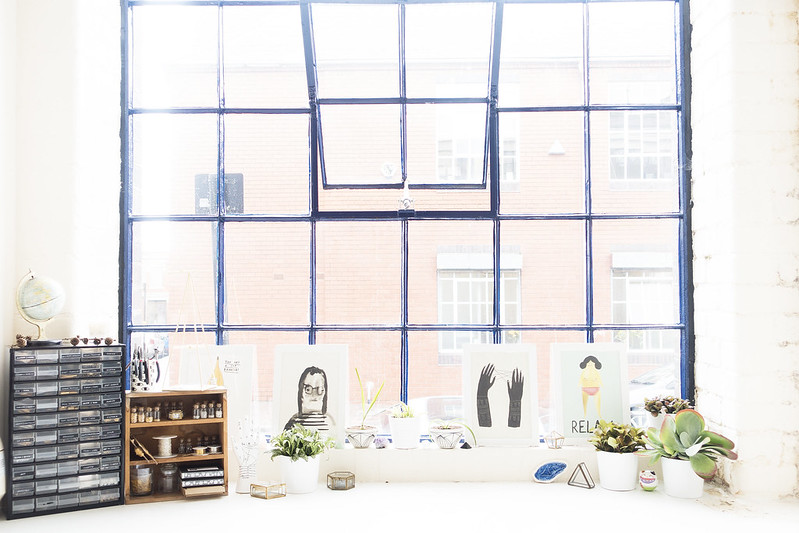
Previously I have discussed how to set-up a studio, create an inspiring work space, and find effective and affordable storage, I've even given a tour of my own studio. One thing I have yet to discuss is, how to create a productive workspace.
De-clutter and Re-organise
If you’re carving a workspace out of a room in your house, it’s important to de-clutter and re-organise the space so you’re starting anew. I started with a fresh canvas when it came to setting up my studio but I regularly de-clutter, making sure to keep the place tidy, and frequently re-organise to make sure the space is working productively for me. If you’re starting with a fresh studio, it’s important to make sure the clutter doesn’t build up into a distracting mess.
Create "Zones"
Dedicate specific places for dealing with certain tasks, even if this means splitting a desk into two and reserving the two sides for different tasks. Organising your equipment, supplies, and materials according to where you do these tasks makes a more efficient production line. The most important thing I did with my own studio was create ‘zones’ and dedicate specific areas for certain tasks. I design and create from the main desk and across the room, I use a small countertop as a “packing station.” I keep the relevant materials and supplies in these areas, which means I don’t have to constantly move around in order to complete a task.
Keep Files in Sync
Set up systems that keep your files in sync and accessible both online and offline so you don’t have to worry about not being able to access and use any important information you may need to complete your work. There is nothing more distracting than not being able to work on your current task because of the mistake of not keeping files in sync.
Arrange Wisely
Pick furniture and storage carefully; switch things around or replace anything that doesn’t work for you. It can take a while to figure out what works best and we’re often inclined to choose things we like the look of rather than what’s functional. The way we work and our requirements often change slowly, so it’s likely what works now might not work in a year’s time.
Make it your Own
Being uncomfortable in your work environment is obviously going to decrease productivity; make the space your own and make it comfortable to work in. Decorate appropriately, use both sound and smell, introduce plants, get the right temperature and lighting, reduce noise, and minimise distractions. Turn the space into something that works with instead of against you.
Keep your Work and Private Life Separate
This is one of those things that is easier said than done; keeping our professional and private lives separate can really aid productivity. I try (and often fail) to keep my phone on silent when I am in the studio so I can get my head down and the work done. Separating work from your private life minimises distractions and keeps your mind on the work in front of you.
Tidy Up at the End of Each Day
Everyone has their own definition of what an acceptable level of tidy is. Whatever your definition is, make sure you reach the bare minimum at the end of every work day. Put away tools, tidy the desks, throw away the rubbish, and make sure everything is back in its place so that you can walk into a clean and inspiring work space each morning.